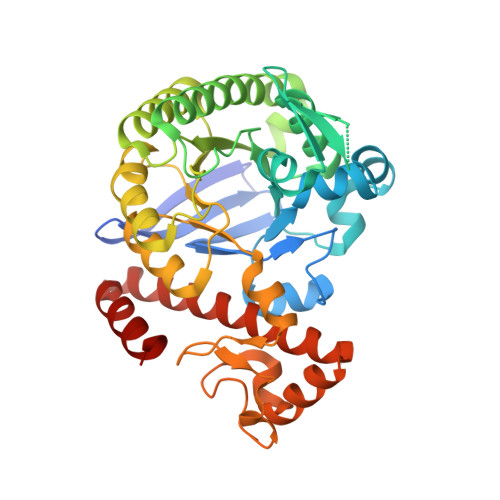Chasing Protons: How Isothermal Titration Calorimetry, Mutagenesis, and pKa Calculations Trace the Locus of Charge in Ligand Binding to a tRNA-Binding Enzyme.
Neeb, M., Czodrowski, P., Heine, A., Barandun, L.J., Hohn, C., Diederich, F., Klebe, G.(2014) J Med Chem 57: 5554-5565
- PubMed: 24955548
- DOI: https://doi.org/10.1021/jm500401x
- Primary Citation of Related Structures:
4PUJ, 4PUK, 4PUL, 4PUM, 4PUN - PubMed Abstract:
Drug molecules should remain uncharged while traveling through the body and crossing membranes and should only adopt charged state upon protein binding, particularly if charge-assisted interactions can be established in deeply buried binding pockets. Such strategy requires careful pKa design and methods to elucidate whether and where protonation-state changes occur. We investigated the protonation inventory in a series of lin-benzoguanines binding to tRNA-guanine transglycosylase, showing pronounced buffer dependency during ITC measurements. Chemical modifications of the parent scaffold along with ITC measurements, pKa calculations, and site-directed mutagenesis allow elucidating the protonation site. The parent scaffold exhibits two guanidine-type portions, both likely candidates for proton uptake. Even mutually compensating effects resulting from proton release of the protein and simultaneous uptake by the ligand can be excluded. Two adjacent aspartates induce a strong pKa shift at the ligand site, resulting in protonation-state transition. Furthermore, an array of two parallel H-bonds avoiding secondary repulsive effects contributes to the high-affinity binding of the lin-benzoguanines.
- Institut für Pharmazeutische Chemie, Philipps-Universität Marburg , Marbacher Weg 6, 35032 Marburg, Germany.
Organizational Affiliation:



















